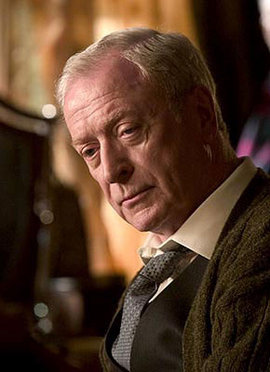The story unfolds like a chess game, as both sides capture each other’s pawns and major pieces to finally check the kings, in this case Dent and Batman on one side and Joker on the other. What’s most astounding to me about the story is that so much happens in terms of character development and dynamics that have very little effect on the overall plot. In fact, the ONLY major turning point in the plot, besides the ending, is the capture of Harvey Dent and Rachel Dawes by the Joker’s mob. That’s it. It’s amazing. There are so many action setpieces, so many explosions, so many shootouts, and so many chases in the story that it’s hard to realize that they all have very little to do with the plot. To wit: what did the extended scene in Hong Kong do for the overall plot? Or the deaths of Commissioner Loeb, or the judge? Or the scenes concerning Gotham General Hospital? Those were all major scenes, with major action set pieces. Yet they had little to do with the overall plot. So what was the point? The answer, for those who know me, makes me very happy indeed. It’s all about character development. That’s right ladies and gentlemen, Christopher Nolan just snuck in one humdinger of a Trojan Horse: a $200 million character movie disguised as a summer action superhero franchise movie. And nobody seems to have noticed. It will probably go down in history as one of the greatest audience cons of all time. Bravo, I say.

The real meat of the story, the points that lie beyond the obvious, are in the effects that the main characters, Batman, Dent, and Joker, have on the rest of the characters and on the plot. They are the ones the story revolves around, and what’s important is the ripples they create in the main plot by their actions, which spur the minor characters into action themselves. As any film student knows, drama is conflict, and the very meaningful decisions made by the main characters trickle down and influence the minor characters to the point where they themselves have to make their own moral decisions. Even the plot itself, the war between two opposing sides, has its roots in the themes surrounding the effects these characters have on others. Since the plot itself is so thin, the story becomes about the themes the main characters reveal about the plot. It’s not a story about two sides fighting, or even something more thematic, like “government vs. crime.” No, it goes much deeper than that. It’s at once good vs. evil, order vs. chaos, understanding vs. ignorance, innocence vs. responsibility, strength vs. weakness, and duty vs. feeling, all so wonderfully metasized by the flipping of the scarred coin. Which side will it land on next? That, in itself, becomes the plot: a war of diametric opposites. The main theme, the main message of the movie, is that there’s no such thing as a two-headed coin. And the only main character who realizes this fact is the one main character still standing at the end: the Batman. The minor characters, like in all good character studies, are pawns of the story used to define the ongoing ideological battle between the main characters. But it’s the Batman, the main character, who is able to see all sides of this theme at once and base his choices, the choices of a main character, which by definition carry the film.
The minor characters, though the story revolves around the three main characters, are likewise affected by the choices of the main characters. While in most action-driven summer movies, these minor characters would be little more than superficial personalities built to service the driving action (as in, who gets killed next? Or who’s the lucky ones in the car chase that has absolutely nothing to do with character dynamics or theme?), in “Dark Knight” they are given dimension through their strong moral choices. Since the plot itself is so uncompromisingly broad, the minor characters have relatively major roles (compared to most action movies) to play in the weaving of the overall theme. Supporting characters like Rachel Dawes, Alfred, Lucius Fox, Jim Gordon, and others make momentous moral choices that would practically constitute main character status in most popcorn-chompers. Consider Rachel’s choosing of a life married to Harvey Dent, Alfred’s decision to burn Rachel’s letter, Lucius’s declaration of resignation, and Gordon’s decision to have himself declared dead, not to mention the moral dilemmas that entire crowds of people are challenged with by the antagonist (whereas in most movies this crowd would be little more than cannon-fodder) exposes the incredible thematic depth of Nolan’s work.

In our third and final installment, we will discuss the Joker’s role in the story, and in cinematic villainy in general.
No comments:
Post a Comment